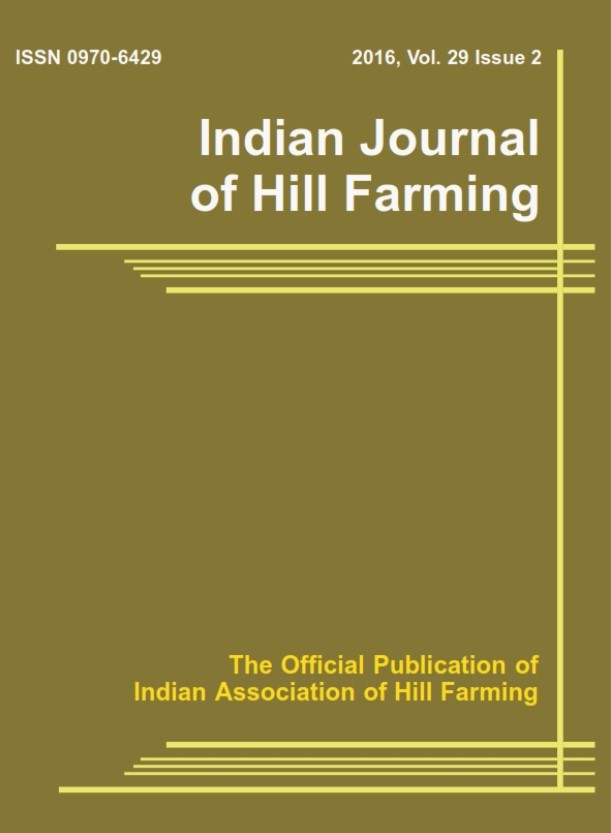Reliability of rainfall and cloud cover forecasts over the hills of northeastern India
DOI:
https://doi.org/10.56678/iahf-2024.37.02.1Keywords:
Forecast verification, Skill scores, Climate variability, NEH-region.Abstract
Weather forecasts are very crucial for day-to-day agricultural management in the recent era of enhanced climatic variability. The study verified the weather forecast (medium-range) for rainfall and total cloud cover (TCC) issued by the India Meteorological Department (IMD) over the northeastern hill (NEH) region of India. The daily forecast was compared to the observed weather parameters in four districts corresponding to four hill states (Meghalaya, Nagaland, Manipur and Mizoram). The analysis was done for qualitative as well as quantitative verification of rainfall forecast with various skill score calculations using five years of daily datasets to provide a robust and consistent result. The results clearly indicate that qualitative rainfall forecasts were very good over the NEH region during all the seasons. The skill scores indicated the maximum accuracy during winter followed by post-monsoon, pre-monsoon, and monsoon months. The quantitative rainfall forecast evaluation revealed that the accuracy was very good during winter and post-monsoon with acceptable accuracy during pre-monsoon, but it was poor during the monsoon season. The TCC forecasts had average accuracy (51–63%) throughout the year over all the places of the NEH region. Overall, the IMD weather forecast was found to be of useful accuracy from the qualitative point of view but improvement in quantitative accuracy especially during high rainfall seasons like monsoon and pre-monsoon months needs to be done for higher impact and thereby adoption by the farmers of the NEH region.
Downloads
Published
Issue
Section
License

This work is licensed under a Creative Commons Attribution-NonCommercial-NoDerivatives 4.0 International License.




